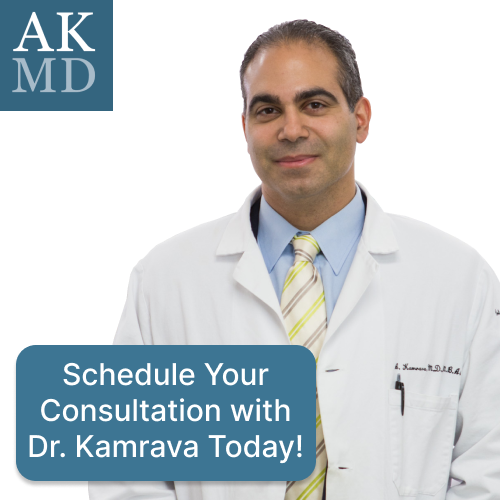Pilonidal cysts are also more common than many people think and if they don’t get treated, the condition can become a chronic condition and, whilst the initial symptoms can be mild, often come with complications. It often also causes pain, swelling and drainage at the very top of the buttocks, making it difficult for people to sit down, work, exercise and enjoy comfort. No home care, antibiotics, or office drainage procedures are currently realistic, but pilonidal cyst removal surgery would be the most reliable long-term solution. Today’s surgical techniques of choice are much friendlier than when they were initially practiced; recovery time is much easier and recurrence rates are decreasing through better technology and wound-care practices. If the patient endures chronic infection, chronic irritation, or a difficult life of persistent sinus tract disease due to long-term infection or irritation, then finally relief will come when they can better understand how pilonidal cyst surgery works.
What Is a Pilonidal Cyst and Why It Becomes Chronic?
This accumulated debris gradually forms a small cavity or sinus tract below the skin which serves as a tunnel. Although a few people only have occasional pain, others are left with painful infections known as abscesses. These abscesses can drain by themselves or require emergency drainage, but the underlying tract nearly always endures. Because the source of the disease does not go away, flare-ups happen again, usually getting worse with each flare.
Because pilonidal disease is persistent, the patient often finds himself in such a vicious cycle as to be utterly frustrated. For example, symptoms often improve temporarily with antibiotics or drainage but return a few weeks or months later as they get worse again. The result is temporary treatments will still not clear the sinus tract and will not remove hair from beneath the skin. Once established, this tract picks up bits of debris. Hence, pilonidal cyst removal surgery is widely regarded as the gold-standard of therapy. Surgery targets the underlying cause — not just the infection — and helps patients to break free from years of recurring pain.
Modern Surgical Option From Minimally Invasive to Traditional Excision
There has been considerable evolution in surgical options for pilonidal disease. The traditional surgical approach is excision, where the cyst is removed as well as the whole of the sinus tract. Depending on the surgeon’s choice, the wound could be left open to heal gradually inside out or partially closed to hasten healing. Open healing is known to lower rates of recurrence as it helps prevent hair or bacteria from falling into a closed incision, although this method involves longer wound care. Minimally invasive surgery, for many patients, looks attractive as an alternative option.
Pit picking, laser ablation and EPSiT (Endoscopic Pilonidal Sinus Treatment) techniques enable surgical teams to strip out the cyst and sinus tract through tiny holes. Tiny incisions, endoscopic cameras, or laser fibers enable those procedures to target infected tissue without resulting in a large wound. Since the skin surrounding them remains mostly intact, recovery time is decreased, pain is diminished and patients can return to normal routines a great deal more quickly.
Preparing for Pilonidal Cyst Removal Surgery
The patient also meets a specialist before the surgery to assess the cyst and decide what to do. So the surgeon might recommend a temporary pilonidal cyst treatment of the persistent infection before moving on to a full removal for the best outcome. Transparent reporting of medical history, prior infection, and lifestyle allows the surgeon to customize this procedure to the patient’s requirements. Preparation normally consists of basic hygiene tips and hair care procedures around the area and what to expect during the process.
For example, patients who undergo minimally invasive procedures often require either local anesthesia or light sedation and patients going through more complex excisions often receive general anesthesia. The whole procedure ensures it is as seamless and low-pressure as possible, and nearly all procedures will finish in less than an hour.
Recovery Process: What Healing Actually Looks Like
However, whether pilonidal cyst removal will resolve or not and the recovery will depend on the surgical technique employed. Patients who get minimally invasive procedures typically will return to school and work, or work as little as light physical activity, within a few days. They might get a little sore, but nothing of considerable duration is common. Open excision involves longer healing time, a patient is treated with daily or weekly care of the wound as the surgical site regenerates naturally. The time required to heal is longer, but still it is one of the most effective ways to prevent long term recurrence. Achieving cleanliness is important for every method.
In the opening days after surgery, surgeons give detailed instructions on how to care for wounds, how to bathe, change dressings and how to sit comfortably. Infection is prevented by good hygiene and quicker healing promoted. Most pain management for patients results from over-the-counter medication, though a quick course of prescription medication may be required for the first few days. Patients return to follow-up appointments to ensure proper wound healing and also to give the surgeon the opportunity to tailor care instruction when needed. Emotional recovery, relief from years of fear, embarrassment or restrictions of your lifestyle, also plays a key role in the surgical outcome, we added. When patients’ frequent flare-ups are gone, and now they can live, work, and move easily instead of having to endure acute symptoms such as sudden pain or drainage; a lot of these patients state that their confidence has been restored and or improved significantly.

How You Can Prevent It From Happening Again
What you should do after surgery And prevention is critical, even after successful surgery. Pilonidal cysts are mainly established due to the amount of loose hair in the cleft between the buttocks, which requires persistent hair control. Surgeons often advise shaving, trimming, or laser hair removal to keep the area free from unwanted hair. Laser hair removal has become more common for pilonidal cyst treatment as the hair grows less in the long term and has a very important impact on the rates of recurrence.
Who Will Have Surgery to Remove a Pilonidal Cyst?
Patients with recurrent abscesses or drains that don’t heal, including those with chronic infections, should be operated on. Patients who consistently require antibiotics or emergency drainage do best with a more permanent remedy, the author says. Some patients delay care unnecessarily due to anxiety or embarrassment, which can lead to more complicated disease.
Early, decisive pilonidal cyst antibiotic treatment not only can help prevent worsening symptoms and make surgical recovery easy, but often also can give way to smoother convalescence.Patients who need pilonidal surgery, say it is life-changing. They no longer fear flare-ups, find it difficult to function in their daily life, or find their level of activity challenging or minimal. For many, the surgery provides them not just with physical comfort, but emotional relief and a confidence in their daily activities.
Choosing the Right Provider for Pilonidal Disease
Not all surgeons are qualified to perform surgery specific to pilonidal disease, however, so it’s going to take a doctor who knows their stuff to improve your prognosis. Practitioners who know traditional and minimally invasive procedures can choose the most effective treatment method based on your anatomy, lifestyle and disease severity. Working alongside them helps to remove it expertly, plan wound care more carefully and develop personalized preventive measures. Referring you to a highly qualified or skilled provider gives you the best possible opportunity for long-term health and recovery.
Conclusion
Modern surgical treatments combined with improved methods of care for wounds by knowledgeable physicians provide patients with the greatest chance of success when treating their chronic recurring illness of pilonidal disease. Whether your symptoms are recent or have persisted for an extended time, visiting a physician is essential to provide the means to escape your symptoms and regain full use of your physical, mental, emotional and social welfare.



